First datasets for U.S. "National Biomass and Carbon Dataset" now available; useful tool for bioenergy sector
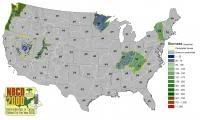 Scientists at the Woods Hole Research Center working to produce America's "National Biomass and Carbon Dataset" for the year 2000 (NBCD2000) are releasing data from nine project mapping zones. All NBCD2000 data products are being made available for download on a zone-by-zone basis and free of charge from the NBCD2000 project website. The datasets are of interest to natural resource managers, especially those in silviculture and the bioenergy sector.
Scientists at the Woods Hole Research Center working to produce America's "National Biomass and Carbon Dataset" for the year 2000 (NBCD2000) are releasing data from nine project mapping zones. All NBCD2000 data products are being made available for download on a zone-by-zone basis and free of charge from the NBCD2000 project website. The datasets are of interest to natural resource managers, especially those in silviculture and the bioenergy sector.Through a combination of NASA satellite datasets, topographic survey data, land use/land cover information, and extensive forest inventory data collected by the USDA Forest Service - Forest Inventory and Analysis Program (FIA), NBCD2000 will provide an invaluable baseline for quantifying the carbon stock in U.S. forests and will improve current methods of assessing the carbon flux between forests and the atmosphere.
The availability of a high resolution dataset containing estimates of forest biomass and associated carbon stock is an important step forward in enabling researchers to better understand the North American carbon balance. - Dr. Josef Kellndorfer, project leaderAs part of the NBCD2000 initiative, begun in 2005 and funded by NASA's Earth Science Program with additional support from the USGS/LANDFIRE, mapping is being conducted within 67 ecologically diverse regions, termed "mapping zones", which span the conterminous United States. Of the nine completed zones, 5 were finished during a 2-year pilot phase. Work on the remaining zones will be completed at a rate of roughly one zone every seven days. The project is scheduled for completion in early 2009:
 energy :: sustainability :: biomass :: bioenergy :: biofuels :: carbon cycle :: carbon flux :: forests :: forestry :: United States ::
energy :: sustainability :: biomass :: bioenergy :: biofuels :: carbon cycle :: carbon flux :: forests :: forestry :: United States :: Wayne Walker, a research associate at the Center who is also working on the project adds, that the data sets that are now available should be of interest to natural resource managers across the U.S. For the first time, high resolution estimates of vegetation canopy height and biomass are being produced consistently for the entire conterminous U.S.
Within each mapping zone data from the 2000 Shuttle Radar Topography Mission are combined with topographic survey data from the National Elevation Dataset (NED) to produce a radar-based map of vegetation canopy height. Subsequently, the map is used to generate estimates of actual vegetation height, biomass, and carbon stock using survey data from the U.S. Forest Service - FIA program and ancillary data sets from the National Land Cover Database 2001 (NLCD2001) project.
The NLCD2001 data layers are crucial inputs to the NBCD2000 project as they provide land cover and canopy density information used in the stratification/calibration process.
Because this is the first systematic, regional-scale study that uses radar data to quantify carbon storage in vegetation, the end result will not only provide valuable information on how well we can do with existing data, but will allow us to see how we might improve and refine requirements for future, more capable missions like DESDynI, which has been recommended by the National Research Council Decadal Survey on Earth Observation. - Diane Wickland, program manager for NASA's Terrestrial Ecology Program
The project website will be updated regularly as mapping zones are completed.
Forest resources and bioenergy
State forest services across the U.S. have been launching initiatives to tap forest resources as a source of bioenergy that can help overcome serious risks, including forest fires. Forest residues as a feedstock for cellulosic ethanol were left out of the recently approved Energy Bill, which requires 21 billion gallons of ethanol to be produced from biomass, including cellulosic materials, by the year 2022.
The provision doesn't limit using wood waste from national forests but it will not count toward the increased renewable fuels standard target in the energy bill. There is one exception in the definition: biomass from federal forests in the immediate vicinity of private homes qualifies for the renewable fuels standard. Several forestry services and policy makers have expressed their dissatisfaction with this measure and have stepped up efforts to get forestry residues included under the RFS.
 A joint study by the US Departments of Agriculture and Energy (USDA and DOE) earlier concluded - in a report titled Biomass as Feedstock for a Bioenergy and Bioproducts Industry: The Technical Feasibility of a Billion-Ton Annual Supply - that the land resources of the US could produce a sustainable supply of biomass sufficient to displace 30% or more of the country’s present petroleum consumption.
A joint study by the US Departments of Agriculture and Energy (USDA and DOE) earlier concluded - in a report titled Biomass as Feedstock for a Bioenergy and Bioproducts Industry: The Technical Feasibility of a Billion-Ton Annual Supply - that the land resources of the US could produce a sustainable supply of biomass sufficient to displace 30% or more of the country’s present petroleum consumption.The study found that just forestland and agricultural land alone have a potential for 1.3 billion dry tons of biomass feedstock per year: 368 million dry tons from forestlands, 998 million dry tons from agriculture (table, click to enlarge).
The Woods Hole Research Center is dedicated to science, education and public policy for a habitable Earth, seeking to conserve and sustain forests, soils, water, and energy by demonstrating their value to human health and economic prosperity. The Center has initiatives in the Amazon, the Arctic, Africa, Russia, Asia, Boreal North America, the Mid-Atlantic, and New England including Cape Cod. Center programs focus on the global carbon cycle, forest function, landcover/land use, water cycles and chemicals in the environment, science in public affairs, and education, providing primary data and enabling better appraisals of the trends in forests.
Map: progress toward completion of the National Biomass and Carbon Dataset for the year 2000. Credit: Greg Fiske, Wayne Walker, Josef Kellndorfer, Woods Hole Research Center
References:
Woods Hole Research Center: The National Biomass and Carbon Dataset 2000 (NBCD 2000).
Eurekalert: First datasets for national biomass and carbon dataset now available - February 14, 2008.
USDA - DOE: Biomass as Feedstock for a Bioenergy and Bioproducts Industry: The Technical Feasibility of a Billion-Ton Annual Supply [*.pdf] - April 2005.
Article continues
 --------------
--------------
 Mongabay, a leading resource for news and perspectives on environmental and conservation issues related to the tropics, has launched Tropical Conservation Science - a new, open access academic e-journal. It will cover a wide variety of scientific and social studies on tropical ecosystems, their biodiversity and the threats posed to them.
Mongabay, a leading resource for news and perspectives on environmental and conservation issues related to the tropics, has launched Tropical Conservation Science - a new, open access academic e-journal. It will cover a wide variety of scientific and social studies on tropical ecosystems, their biodiversity and the threats posed to them.



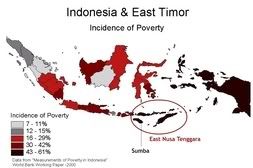
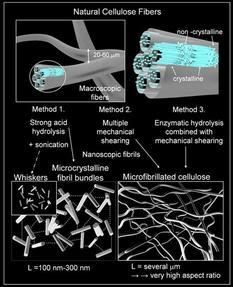
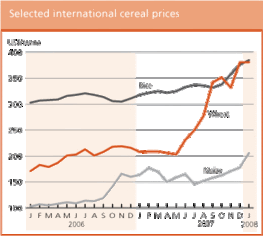
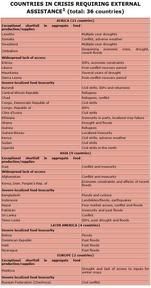







Thursday, February 14, 2008
Breakthrough in selective CO2 capturing materials; could make bioenergy carbon-negative
When carbon capture and storage (CCS) is coupled to biomass energy production, negative emissions are the result. Such carbon-negative bioenergy systems - which actively remove CO2 from the atmosphere - are the most radical tool in the climate fight. They come in the form of decarbonised bio-electricity or biohydrogen. Ordinary renewables like solar, wind, non-CCS bioenergy or hydropower are all 'carbon-neutral' at best, that is, they do not add new or only modest amounts of CO2 to the atmosphere, but they do not take the greenhouse gas out if either. Bioenergy with carbon storage does. The difference can be very significant: whereas the lifecycle carbon emissions of ordinary renewables and nuclear range between +10 to +100 grams of CO2eq per kWh, bioenergy coupled to CCS can yield as high as -1000gCO2/kWh (that is: minus 1000 grams, hence "negative emissions"), and thus clean up the atmosphere by removing CO2 from the past.
Efficient and affordable CO2 capturing technologies are needed to make such carbon-negative bioenergy systems feasible (see list of references below for an overview of developments). The UCLA breakthrough, made at professor Omar Yaghi's lab, goes a long way in meeting this need:
The carbon dioxide is captured using a new class of materials designed by Yaghi and his group called zeolitic imidazolate frameworks, or ZIFs. These are porous and chemically robust structures, with large surface areas, that can be heated to high temperatures without decomposition and boiled in water or organic solvents for a week and still remain stable.
Rahul Banerjee, a UCLA postdoctoral research scholar in chemistry and Anh Phan, a UCLA graduate student in chemistry, both of whom work in Yaghi's laboratory, synthesized 25 ZIF crystal structures and demonstrated that three of them have high selectivity for capturing carbon dioxide (ZIF-68, ZIF-69, ZIF-70).
The selectivity of ZIFs to carbon dioxide is unparalleled by any other material, said Yaghi, who directs of UCLA's Center for Reticular Chemistry and is a member of the California NanoSystems Institute at UCLA. Rahul and Anh were so successful at making new ZIFs that, for the purposes of reporting the results, Yaghi had to ask them to stop.
The inside of a ZIF can store gas molecules. Flaps that behave like the chemical equivalent of a revolving door allow certain molecules — in this case, carbon dioxide — to pass through and enter the reservoir while blocking larger molecules or molecules of different shapes:
In ZIFs 68, 69 and 70, Banerjee and Phan emptied the pores, creating an open framework. They then subjected the material to streams of gases - carbon dioxide and carbon monoxide, for example, and another stream of carbon dioxide and nitrogen — and were able to capture only the carbon dioxide. They are testing other ZIFs for various applications:
Currently, the process of capturing carbon dioxide emissions from power plants involves the use of toxic materials and requires 20 to 30 percent of the plant's energy output, Yaghi said. By contrast, ZIFs can pluck carbon dioxide from other gases that are emitted and can store five times more carbon dioxide than the porous carbon materials that represent the current state-of-art. For each liter of ZIF, you can hold 83 liters of carbon dioxide.
On a fundamental level, the invention of ZIFs has addressed two major challenges in zeolite science. Zeolites are stable, porous minerals made of aluminum, silicon and oxygen that are employed in petroleum refining and are used in detergents and other products. Yaghi's group has succeeded in replacing what would have been aluminum or silicon with metal ions like zinc and cobalt, and the bridging oxygen with imidazolate to yield ZIF materials, whose structures can now be designed in functionality and metrics.
Banerjee and Anh automated the process of synthesis. Instead of mixing the chemicals one reaction at a time and achieving perhaps several reactions per day, they were able to perform 200 reactions in less than an hour. The pair ran 9,600 microreactions and from those reactions uncovered 25 new structures. The scientists say they keep producing new crystals of ZIFs every day.
Co-authors are Bo Wang, a UCLA graduate student in chemistry in Yaghi's laboratory; Carolyn Knobler and Hiroyasu Furukawa of the Center for Reticular Chemistry at the UCLA's California NanoSystems Institute; and Michael O'Keeffe of Arizona State University's department of chemistry and biochemistry.
BASF, a global chemical company based in Germany, funded the synthesis of the materials, and the U.S. Department of Energy funded the absorption and separation studies of carbon dioxide.
Image: The single crystal x-ray structures of ZIFs. (Left and Center) In each row, the net is shown as a stick diagram (Left) and as a tiling (Center). (Right) The largest cage in each ZIF is shown with ZnN4 tetrahedra in blue, and, for ZIF-5, InN6 octahedra in red. H atoms are omitted for clarity. Credit: Yaghi Lab.
References:
Eurekalert: New materials can selectively capture carbon dioxide, UCLA chemists report - February 15, 2007.
The reference to the Science article was not yet available at the time of writing; we will update this article as soon as it does.
Yaghi's team did publish about ZIFs earlier:
Hideki Hayashi, Adrien P. Côté, Hiroyasu Furukawa, Michael O'Keeffe & Omar M. Yaghi, "Zeolite A imidazolate frameworks" [*.pdf - at Yaghi Lab], Nature Materials 6, 501 - 506 (2007), Published online: 27 May 2007 | doi:10.1038/nmat1927
Omar M. Yaghi, et. al. "Exceptional chemical and thermal stability of zeolitic imidazolate frameworks" [*.pdf - at Yaghi Lab], PNAS, July 5, 2006, vol. 103, no. 27, 10186-10191, DOI: 10.1073/pnas.0602439103
Yaghi Laboratory.
Scientific literature on negative emissions from biomass:
H. Audus and P. Freund, "Climate Change Mitigation by Biomass Gasificiation Combined with CO2 Capture and Storage", IEA Greenhouse Gas R&D Programme.
James S. Rhodesa and David W. Keithb, "Engineering economic analysis of biomass IGCC with carbon capture and storage", Biomass and Bioenergy, Volume 29, Issue 6, December 2005, Pages 440-450.
Noim Uddin and Leonardo Barreto, "Biomass-fired cogeneration systems with CO2 capture and storage", Renewable Energy, Volume 32, Issue 6, May 2007, Pages 1006-1019, doi:10.1016/j.renene.2006.04.009
Christian Azar, Kristian Lindgren, Eric Larson and Kenneth Möllersten, "Carbon Capture and Storage From Fossil Fuels and Biomass – Costs and Potential Role in Stabilizing the Atmosphere", Climatic Change, Volume 74, Numbers 1-3 / January, 2006, DOI 10.1007/s10584-005-3484-7
Further reading on negative emissions bioenergy and biofuels, and carbon capture techniques:
Peter Read and Jonathan Lermit, "Bio-Energy with Carbon Storage (BECS): a Sequential Decision Approach to the threat of Abrupt Climate Change", Energy, Volume 30, Issue 14, November 2005, Pages 2654-2671.
Stefan Grönkvist, Kenneth Möllersten, Kim Pingoud, "Equal Opportunity for Biomass in Greenhouse Gas Accounting of CO2 Capture and Storage: A Step Towards More Cost-Effective Climate Change Mitigation Regimes", Mitigation and Adaptation Strategies for Global Change, Volume 11, Numbers 5-6 / September, 2006, DOI 10.1007/s11027-006-9034-9
Biopact: Commission supports carbon capture & storage - negative emissions from bioenergy on the horizon - January 23, 2008
Biopact: The strange world of carbon-negative bioenergy: the more you drive your car, the more you tackle climate change - October 29, 2007
Biopact: "A closer look at the revolutionary coal+biomass-to-liquids with carbon storage project" - September 13, 2007
Biopact: New plastic-based, nano-engineered CO2 capturing membrane developed - September 19, 2007
Biopact: Plastic membrane to bring down cost of carbon capture - August 15, 2007
Biopact: Pre-combustion CO2 capture from biogas - the way forward? - March 31, 2007
Biopact: Towards carbon-negative biofuels: US DOE awards $66.7 million for large-scale CO2 capture and storage from ethanol plant - December 19, 2007
Biopact: Biochar and carbon-negative bioenergy: boosts crop yields, fights climate change and reduces deforestation - January 28, 2008
Article continues
posted by Biopact team at 10:42 PM 2 comments links to this post
